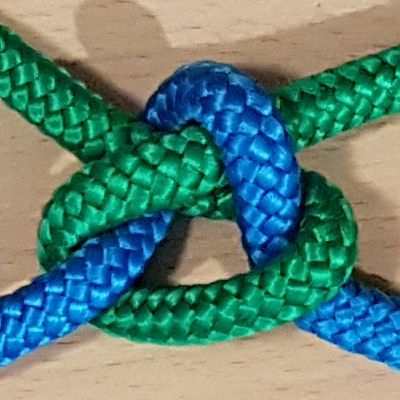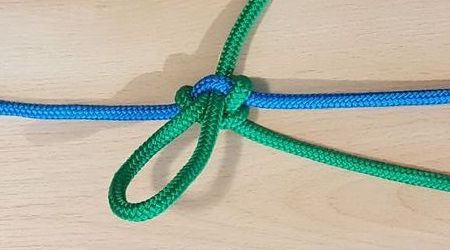
Description:
The George’s hitch is an adjustable hitch (knot) that can be easily adjusted by hand when there is no load on the standing part, but immediately locks again as soon as the load is present again. It is also easy to release the hitch completely when it is unloaded.
Disclaimer:
ATTENTION!
Check the knots carefully and conscientiously! Errors in tying the knots can lead to serious injury or death! No responsibility is accepted for any accidents or other incidents resulting from the use of any information on this homepage. See also page „Disclaimer„.
The knots I developed myself have been extensively tested by me. However, they have not yet been tested in practice. Therefore, all these knots should be used with extreme caution and as long as they have not been tested in practice, they should not be used in safety-relevant cases.
Experience reports are requested.
Data:
Knot-Type:
Friction hitches, adjustable loops
ABOK-No.:
not found!
Knot-Strength:
?
Developer:
Juergen Sartor, Karlsruhe, Germany (Juergen = George)
Date of Development:
2020-07-02
Date of Publication:
2021-06-03
Related Knots:
not releasable under load:
– Dani’s Hitch
– Blake’s Hitch
releasable under load:
– Juergen’s Hitch
– Sartor’s Hitch
– Taut-Line Hitch
– Rolling Hitch
– Tarbuck-Knot
Advantages:
- The George’s Hitch is easy to tie and, depending on the type of rope, holds over 100 kg, even though there are actually only two half turns above the fixed rope. In terms of the number of turns, this makes it one of the tightest knots in the world.
- If there is no load on the hitch, it can be adjusted quite easily, but it immediately locks again as soon as a load is placed on the hitch again.
- If there is no more load on the hitch, the hitch will come completely untied when the loose part of the slip is pulled.
Disadvantages:
- The hitch cannot be released under load.
- The hitch has a preferred direction for the load. If you pull in the other direction, the friction is only about half as high.
Tying:
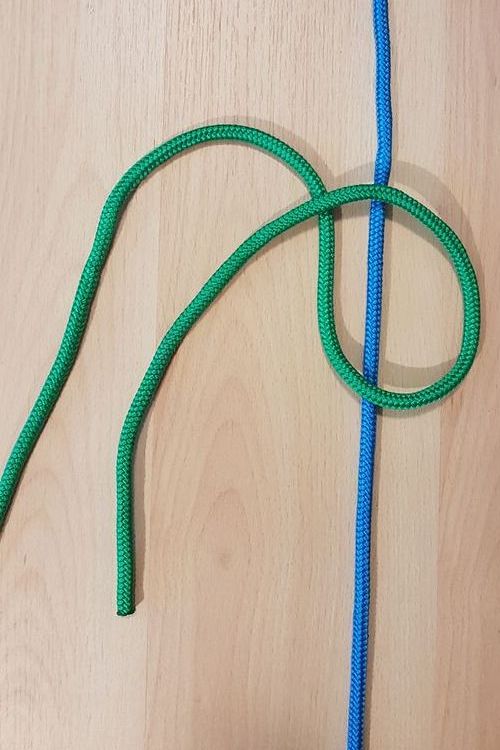
To knot the hitch (green rope), first place one turn over the fixed rope (blue) so that the rope (loose end) is on top.
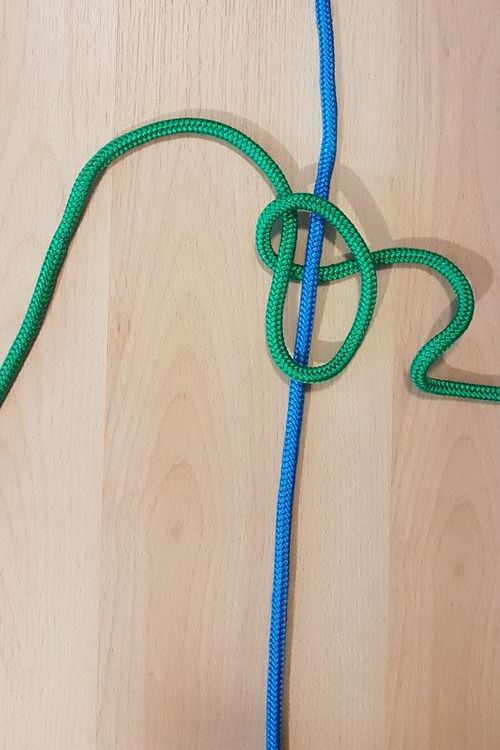
After that, the ropes end is passed underneath everything …
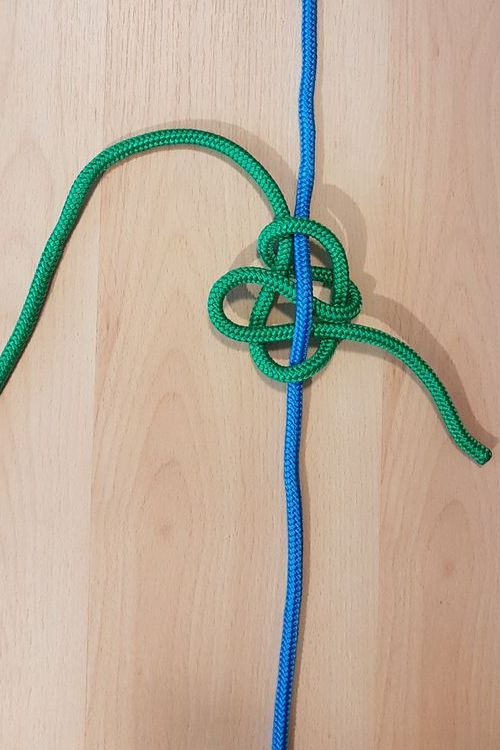
… and then pulled through as an open loop or slip between the hitch’s line, which is now underneath, and the fixed line.
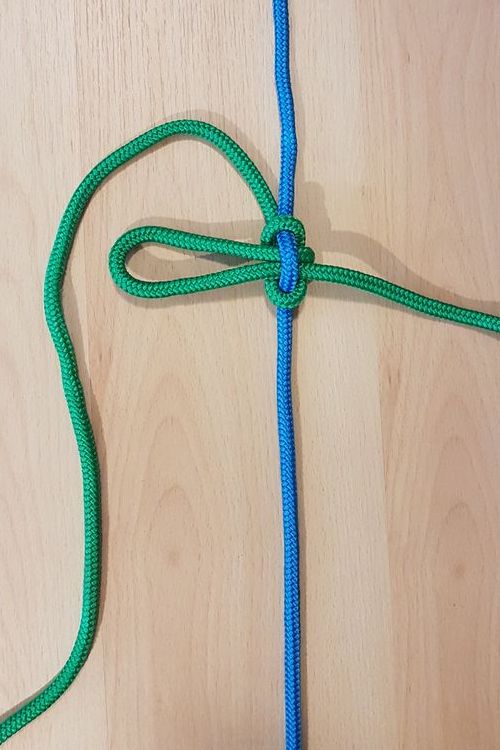
Then first the slip and then the fixed part of the hitch’s line is pulled tight.
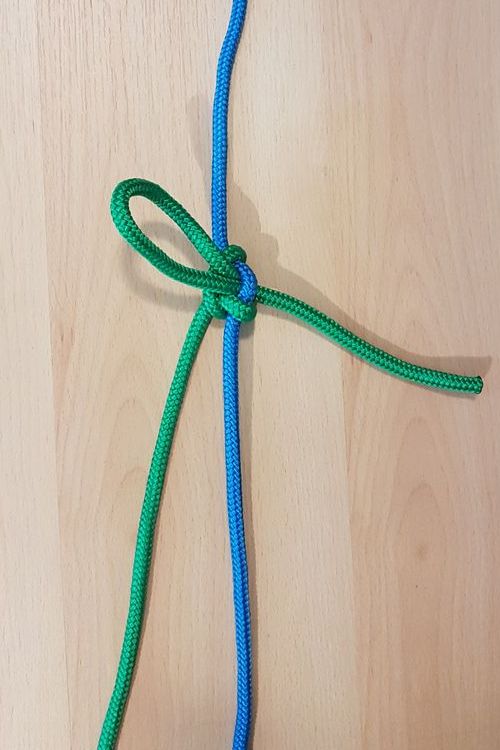
If you now pull and load the fixed part of the hitch towards the side of the first contact (here downwards), the hitch line bends the fixed line so tightly that, depending on the type of rope, over 100 kg can be held.
The stek also has a frictional force if you pull upwards here, but this is not as high as in the intended direction (here downwards) (approx. less than 50 %).
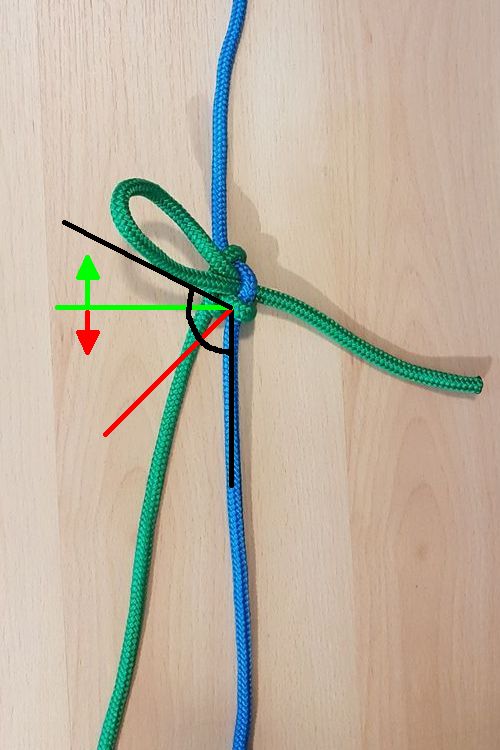
It is important that the hitch is pulled tight enough so that the angle of the lower attachment point is within the range of the upper 90° angle.
Without load, the hitch can easily be moved by hand on the standing rope.
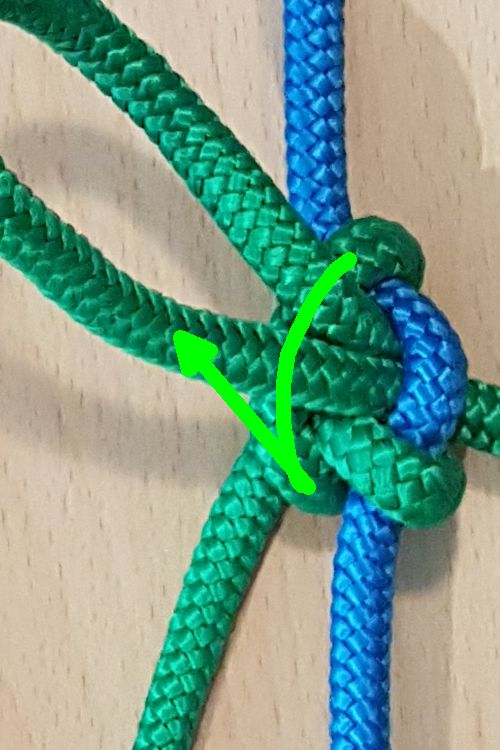
If it is difficult to move the hitch, you can simply release it by pushing the „holding“ bight (light green arc) at the lower end here away from the fixed line. This frees the hitch again.
Untying:
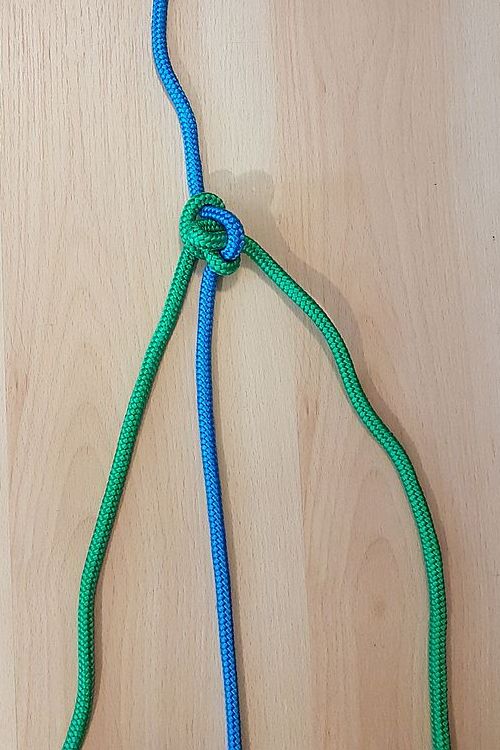
It may be necessary to loosen the hitch first, as shown in the first picture. Then you can pull out the slip on the rope.
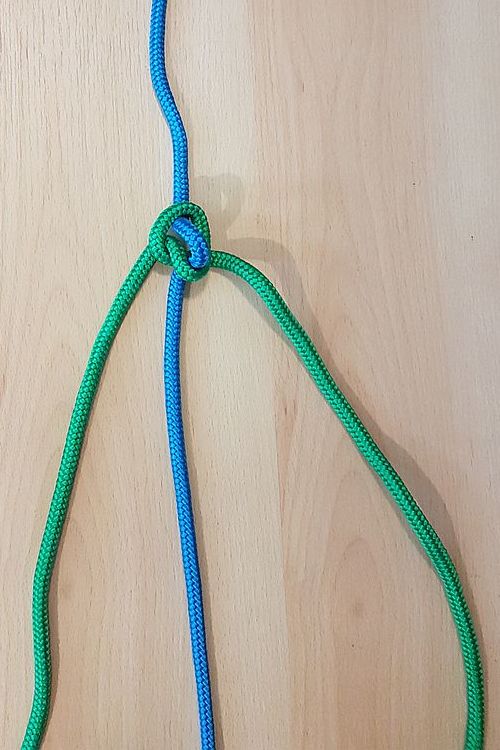
This then frees the hitch from the fixed rope …
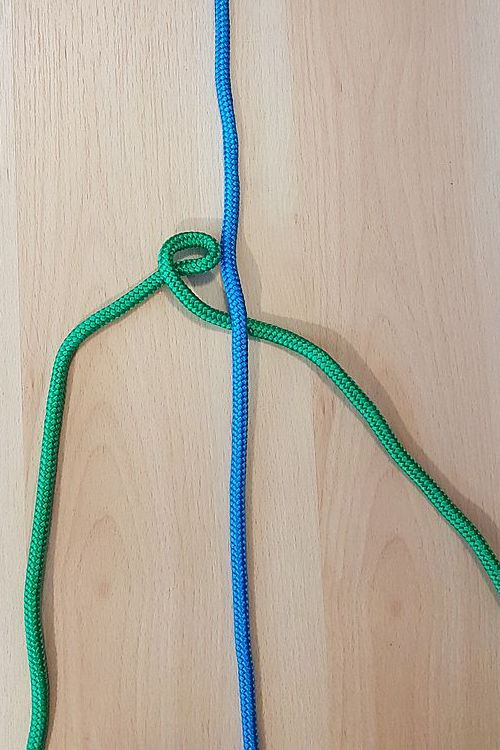
… and causes it to release completely.
Variant 1, higher friction force:
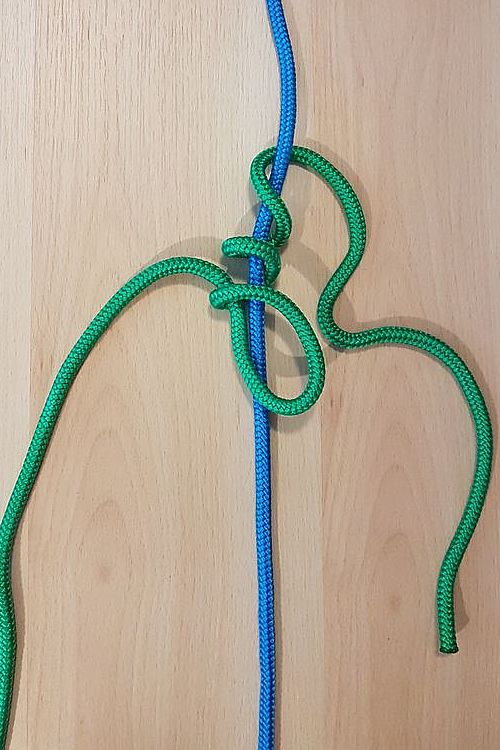
If the inherently high frictional force of the hitch (compared to conventional hitches, such as Taut-Line Hitch or Rolling Hitch) is not sufficient, additional turns can be made around the here upper part of the fixed rope.
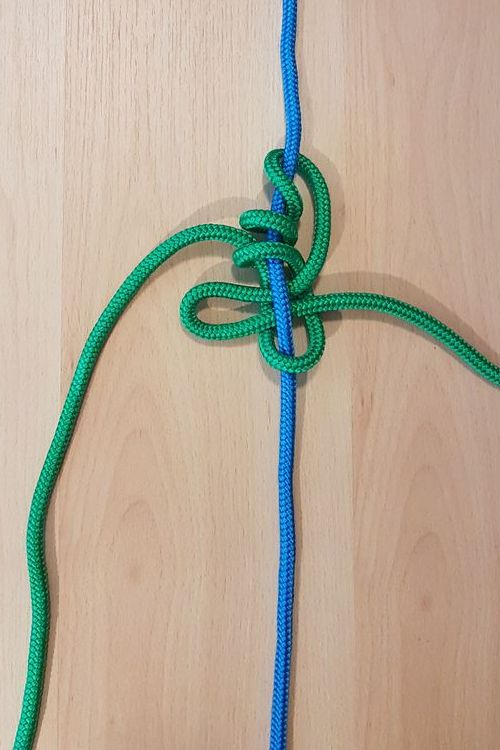
Then pull a slip through the open eye as before ….
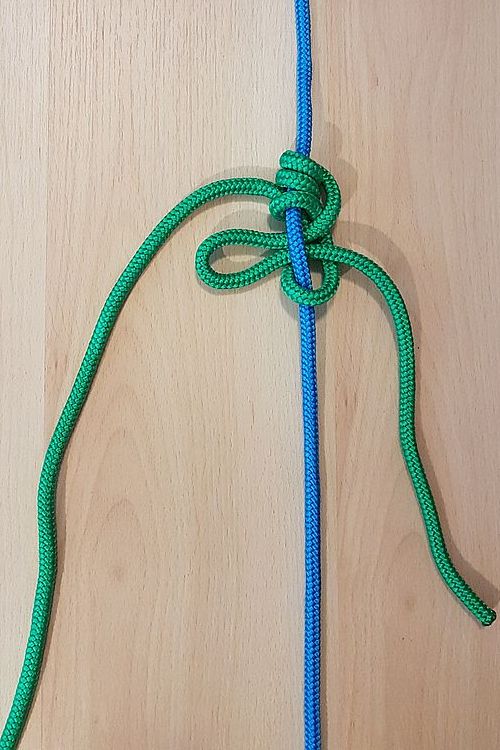
… then pull tight at the top …
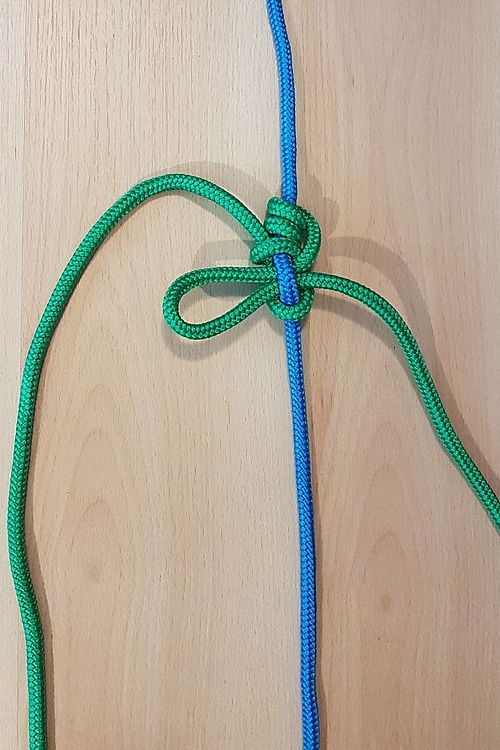
… and pull tight at the bottom.
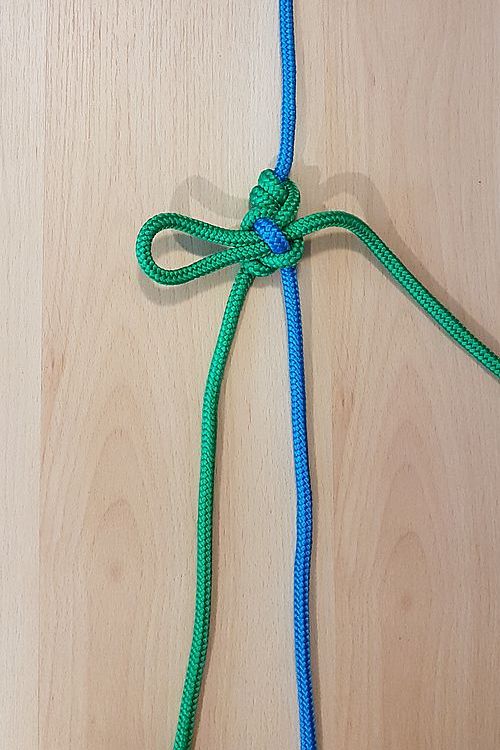
After that, the hitch can be loaded with higher forces than described above.
Variant 2, as loop:
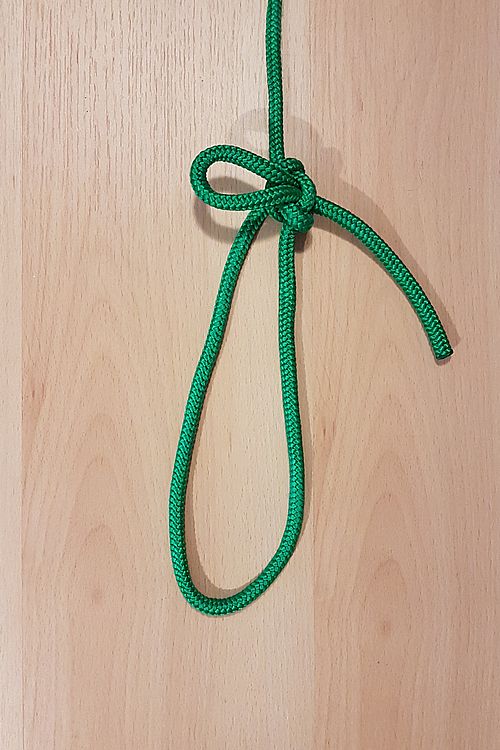
If you want to have an adjustable loop, simply use the loose part of the rope to tie the knot. It is important that the turn is layed from the side of the fixed part, see the first picture of this description, i.e. in the pictures shown here it comes from top and not from bottom.
Write a comment
Your email address will not be published. Required fields are marked with *.



